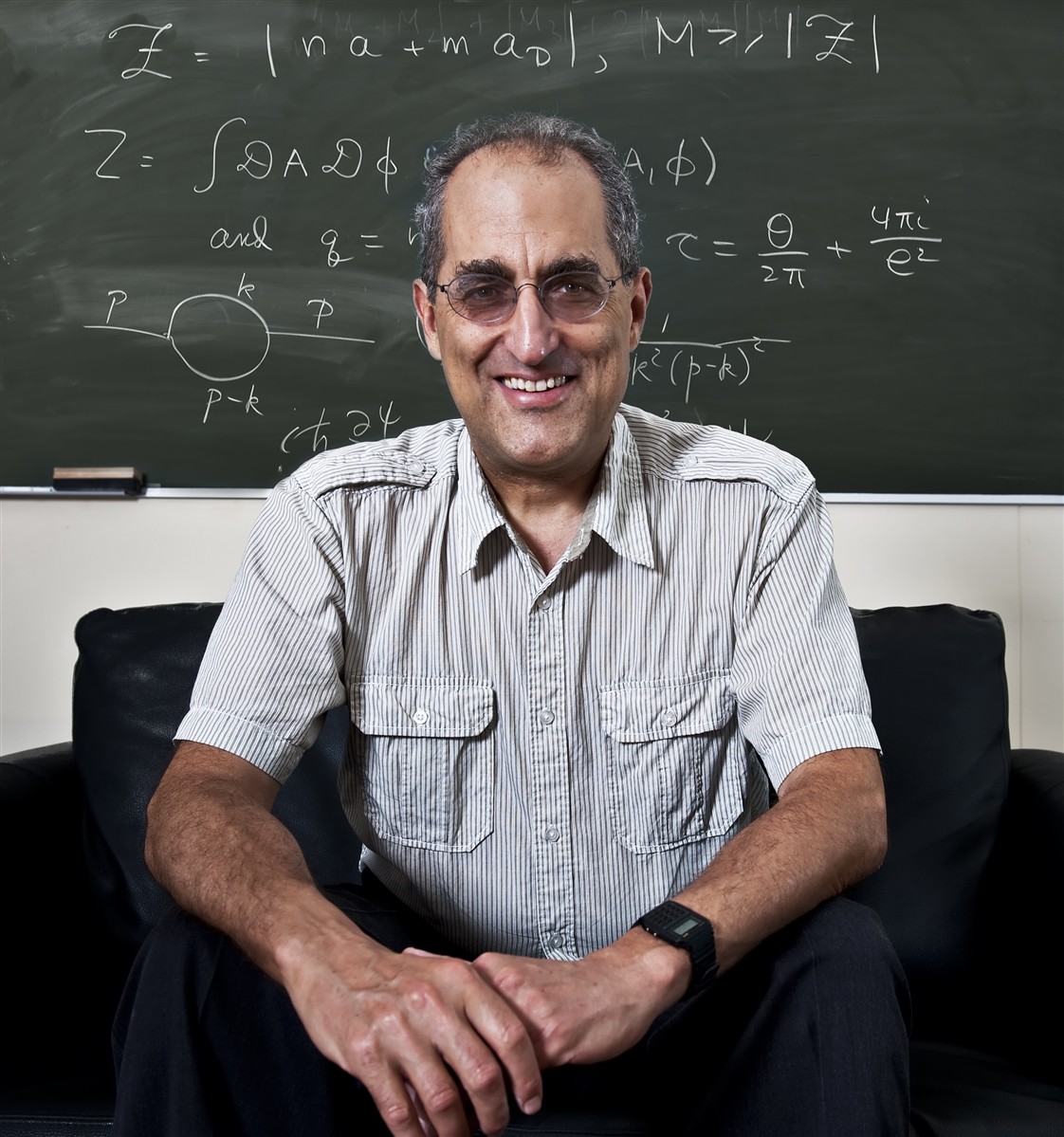Vibrating minds
Ed Witten is one of the leading scientists in the field of string theory, the theory that describes elementary particles as vibrating strings. This week he leaves CERN after having spent a few months here on sabbatical. His wish is that the LHC will unveil supersymmetry.

A large community of scientists world-wide are eagerly awaiting the first collisions at the LHC and the wealth of unprecedented experimental data that will be made available. Some of them, however, are possibly even more impatient because the outcome of LHC operation could provide a ‘yes’ or ‘no’ to their theories. Among them is Ed Witten, one of the fathers of the M-theory, a supersymmetric theoretical model in which the Universe could have up to 11 dimensions, something very hard to feel, even for him. "I can’t imagine extra dimensions, not many people can", he admits. "We work with extra dimensions using equations. Descartes taught us hundreds of years ago that geometry can be reformulated in terms of equations. Many people regard that as the first really big discovery in geometry since the ancient Greeks. When you are translating geometry into equations, you can add more variables to the equations, and then you can calculate with extra dimensions. But I am not sure I would say I understand them, I can’t visualize them."
Like many physicists, Witten is excited about the chance that the LHC will unveil supersymmetric particles or other mysteries. Any observation or evidence in this respect would certainly clarify many issues in Witten’s theory that remain open. "This is an exciting moment for particle physicists everywhere", says Witten. "For many years we’ve been wondering what there is at the energy of the electroweak symmetry breaking scale and we are finally going to learn".
Supersymmetric particles are an important key to the understanding of the Universe, as they could form dark matter – the obscure ‘something’ that, from calculations on the movement of galaxies, appears to account for about 24% of the Universe but remains out of reach for our exploration instruments. "Producing a dark matter particle in the LHC and also detecting it in underground experiments that look at dark matter particles in cosmic rays is one of our best aids in coming to grips with the mystery of what makes up most of the matter in galaxies and clusters of galaxies", confirms the theorist. And he adds: "there are searches going on also at CERN for completely different kinds of dark matter candidates. There’s the CAST experiment, which searches for a type of dark matter in axions that you wouldn’t find at the LHC".
Besides providing an explanation to one of the most puzzling observations of the nature of the celestial objects, supersymmetry could be the missing link between general relativity and quantum mechanics. "General relativity describes large objects such as the solar system, galaxies, and the Universe", explains Witten. "Quantum mechanics, as elaborated in the Standard Model, describes small objects such as atoms, molecules, and subatomic particles. Physicists, however, are not satisfied with having two different theories that work in two different realms. One reason is simply that big objects ultimately are made out of little objects. The same forces operate on both atoms and stars, for example, even though gravity is more obvious for stars while electricity and magnetism dominate in atoms. At present, string theory is the only framework we have for understanding quantum gravity. Whatever scenario is confirmed by the experimental data, it must be possible to combine the Standard Model and general relativity into a bigger, more complete theory that describes the behaviour of both atoms and stars".
Speaking of stars, the LHC’s star new particle remains the Higgs boson. Despite its popularity, not all the theorists agree on its existence. What is Witten’s opinion? "Certainly something that accounts for the breaking of the electroweak symmetry exists", says Witten. "Our basic equations say that electromagnetism is very similar to the weak interactions, yet weak interactions are only studied using the techniques of 20th century physics. Some physics process broke the symmetry between them and the Higgs is the simplest explanation. Moreover, it agrees well with all the data we have today, whereas competing theories have trouble. Therefore, personally I think that the Higgs exists, perhaps along with other things".
Witten goes even further and mentions a very intriguing possible link between the existence of the Higgs and dark energy, the mysterious force that seems to accelerate the Universe’s ongoing expansion. "Dark energy points to a tiny but positive energy density of the vacuum", he explains. "The vacuum energy is a problem that involves both quantum mechanics, because this energy comes from quantum fluctuations, and gravity, because gravity is the only force in nature that ‘sees’ the energy of the vacuum. From the point of view of the theory, the puzzle about the Higgs boson is similar to the puzzle about dark energy. In each case, there’s a mass parameter that describes what happened. What physicists don’t understand is why it's so small. So it is conceivable that, by studying the electroweak symmetry break at the LHC, we’ll get important clues about the nature of dark energy.
Although he had hoped to see the first collisions, Witten says it has been a very fruitful experience and he is sure he will follow the LHC very closely, even if from a distance. "Apart from the scientific stimulation", he concludes, "it has simply been a lot of fun to be here!"
Full video interview available at:
http://cds.cern.ch/record/1184753

